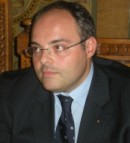|
|
Plenary
Lecture
Convergence Speed and Population Dynamics in the AK
Model with Habit Formation

Professor Massimiliano Ferrara
Department SSGES
Mediterranean University of Reggio Calabria
Via dei Bianchi, 2, Reggio Calabria, 89127
ITALY
E-mail:
massimiliano.ferrara@unirc.it
Abstract: AK-type models with habit formation have
been used in the literature to address a wide variety of
issues. For example, through numerical simulations,
Carroll et al have shown that the introduction of habit
formation in the standard AK endogenous growth model may
cause this model to exhibit transitional dynamics, while
Gomez has proved that the convergence speed of the AK
model with external habits is higher than that in the AK
model with internal habits. It is known that usually
standard economic growth theory assumes that labor
(population) force grows at a positive constant rate
(Malthusian model). However, this assumption is not a
good approximation to reality as population
exponentially grows without limits, which is clearly
unrealistic. To remove the prediction of unbounded
population size in the very long-run, Verhulst wrote an
alternative model, known as the logistic growth model,
where the population stock evolves according to an
elongated S-curve. Recent forecasts (e.g., United
Nations) confirm that the annual growth rate of
population is expected to fall gradually until 2100, and
that world population will stabilize at a level of about
eleven billion people by 2200. Thus, not only
theoretically but also empirically, it seems reasonable
to model population size as following a logistic
process. Bucci and Guerrini, Ferrara and Guerrini,
Germana’ and Guerrini, and Guerrini, have recently
explored the implications of studying some economic
growth models within a framework where the change over
time of the labor force is non constant but governed by
the logistic law or by a bounded population growth rate.
In this paper, we wish to investigate the dynamic
effects of assuming a logistic population growth
hypothesis in Gomez’s model. This set-up leads the
economy to be described by a four dimensional dynamical
system, whose unique non-trivial steady state
equilibrium is a saddle point with a two dimensional
stable manifold. Two stable roots, rather than only one
as in Gomez, determine the speed of convergence. Now,
the crucial determinant of the asymptotic speed of
convergence is the larger of the two negative
eigenvalues. As a result, contrary to Gomez, the
asymptotic speed of convergence may be not necessarily
decreasing as the value of some parameter increases.
Brief Biography of the Speaker:
Massimiliano Ferrara is Associate Professor of
Mathematical Economics at "Mediterranea" University of
Reggio Calabria where he was also Dean of the degree in
Economics (2007-2010). Actually he is the Director of
Department - Culture, Education, Research and University
at Regione Calabria. He was the Founder and Director of
MEDAlics (2009) – Research Centre for Mediterranean
Studies - and Vice Rector at "Dante Alighieri"
University of Reggio Calabria. He was also Visiting
Professor at Morgan State University in Baltimore (USA),
Western Michigan University (USA), New Jersey Institute
of Technology in Newark (NJ) (USA).He is co-author of
the research work on "Knowledge flows and technological
trajectories in the Mediterranean Area" published in
2009 on African Journal of Science, Technology,
Innovation and Development, and for volume "Economics
and International Cooperation in the Mediterranean Area"
for Rubbettino Editore. Invited Speaker by WSEAS
Conferences (Baltimora MACMESE '09 Morgan State
University) by American Mathematical Society (Western
Michigan University, USA) and Calcutta Mathematical
Society, INDIA and Visiting Professor at the Lomonosov
Moscow State University (Department of Mathematics), at
the New Jersey Institute of Technology in NewArk (NJ)
(USA), (Department of Mathematical Sciences), at the
Eotvos Lorand University of Budapest (Department of
Atomic Physics, Faculty of Sciences), at Politehnica of
Bucharest (Department of Mathematics). Author of 105
publications on international journals many of them
"high impact Scientific International (ISI)" and 5
monographs. Member of Indian Academy of Mathematics
(2008- current), Member of Accademia Peloritana dei
Pericolanti (2003-current), Member of the Balkan Society
of Geometers (2003- current), Member of AMASES -
Associazione di Matematica Applicata alle Scienze
Economiche e Sociali - (2003- current), Member of the
Scientific SET - Advances Center for Studies on Economic
Theory - (Center for Advanced Studies Theoretical
Economics) at the University of Milan Bicocca
(2005-current), Member of the Mathematical Association
of America (2007-current), Member of the SIEP (Societa
italiana di Economia Pubblica) (2008-current).
Scientific Coordinator of international projects
financed by the Ministry of Foreign Affairs:the
Executive Programme of scientific and techonological
cooperation between Italy and Romania during 2006- 2008
and of the Executive Programme of scientific and
technological cooperation between Italy and Estonia
during 2005-2007. Editor and referree of several
International Journals. Official Reviewer of
Mathematical Reviews (MathSciNet), Division of the
American Mathematical Society and Zentralblatt MATH,
reviews scientific journal published by the European
Mathematical Society, the Heidelberg Academy of Sciences
and Fachinformationszentrum Karlshruhe. His main
research interests are: dynamical systems, patterns of
growth and sustainable development, mathematical
economics, game theory, optimization theory, applied
Economics.
|
|
